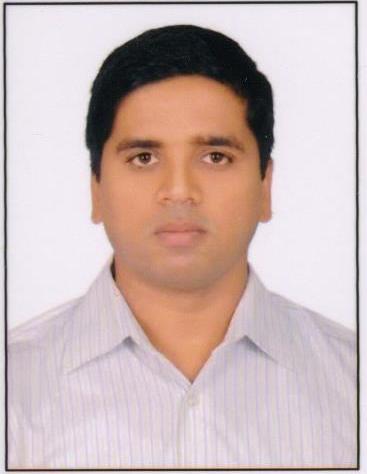per person /
Free
Microbial Biotechnology
Course Attendees
Still no participant
Course Reviews
Still no reviews
Course Name : Microbial Biotechnology
Code(Credit) : CUTM 1120(3-1-1)
Course Objectives
• To highlight the roles and characteristics of microorganisms in field of
Biotechnology
• To impart knowledge on the basic concept of multiplication in
microorganism
• To study in detail the growth, genetic organization of microorganisms and
impact of environment on their growth
• To evaluate explicitly, the metabolic pathways, role of microbes in
public health; insight into the physical and chemical control of
microorganisms.
Learning Outcomes
To impart knowledge on types of microorganisms used in the field of Biotechnology for product development.
Course Syllabus
Module I: Title (4 hrs): Introduction to microbial World
Microbial World; Microscope and its types, Phase contrast microscope, Electron microscope, SEM, TEM, STEM; Microscopic examination of microorganisms.
Practice:Microscope and its use
Module II: Title (5 hrs): Classification of microbes
Classification and Identification of microorganisms; Bacteria, morphology and fine structure of bacteria, cultivation of bacteria, reproduction & growth, pure cultures and cultural characteristics.
Practice:Isolation of bacteria
Module III: Title (4 hrs): Importance of virus in our environment
General characteristics-Morphology and structure of Virus, Classification- isolation and identification-fatal diseases associated with viruses in animals.
Practice:Isolation and Identification of algae, fungi and Protozoa
Module IV: Title (5 hrs): Genetic organization of other microbes and importance
Algae, Fungi, molds and Protozoa – importance, characteristics, morphology, reproduction, physiology cultivation & their association with other organisms. Genome organization of bacteria, virus, algae and fungi,
Practice: Antibiotic Assay - Antimicrobial Sensitivity Test (Disc Diffusion Method)
Module V: Title (4 hrs): Classification of microbes using genome mapping
DNA and RNA present as genetic material in microbes. Types and division of microbes according to their genetic organization. Classification of microbes according to genotyping.
Practice: Growth Kinetics (Bacterial Growth Curve)
Module VI: Title (4 hrs): Metabolism in microbes
Enzymes and their regulation, Microbial metabolism energy production, utilization of energy & biosynthesis, bacterial genetics.
Module VII: Title (4 hrs): Application of microbes in Biotechnology
Application of microbes in fuel industry; Agriculture, aquatic microbiology; Study of domestic water and waste water.
Project: Genome mapping (Partial) of some important industrial bacteria isolated from local area.
Text Books:
1. R.K. Sahoo: Introduction to Microbiology, Year 2020, Kindle publication, Amazon, 1st Edition
2. B. Ray, A. Bhunia: Fundamental food microbiology, CRC press, 5th Edition.
Reference Books:
1. Michael Pelczar JR, E.C.S. Chan, Noel R. Krieg:Microbiology, Mc Graw Hill, 6th Edition.
2. Foster WM, Food Microbiology, CBS publishers, 2018 Edition
Course outline Prepared by; Dr. Ranjan Kumar Sahoo Date:08-06-2020
Source of reference: NSQF/Udemy/ Coursera
Session 6
Classification and Identification of microorganisms
Session 11
Project: Genome mapping (partial) of some industrially important bacteria isolated from local area.
Step 1: Isolation of bacteria from soil.
Session 15
Classification- isolation and identification of viruses
Session 16
Fatal diseases associated with viruses in animals
Session 17
Introduction to Algae, Fungi, molds and Protozoa
Session 18
Practice: Isolation and identification of algae, fungi and protozoa
Session 19
Importance of Algae, Fungi, molds and Protozoa in our society
Session 20
Characteristics, morphology, reproduction of Algae, Fungi, molds and protozoa
Morphology of Protists
Session 21
Project: Genome mapping (partial) of some industrially important bacteria isolated from local area.
Step 2: Identification of bacteria isolated from soil.
Session 22
Cultivation & their association with other organisms.
Session 24
Genetic material in microbes
Session 25
Practice: Antibiotic assay (Anti-microbial sensitivity test: Disc diffusion method)
Session 27
Classification of microbes according to the genome type. Differences between DNA and RNA present in their chromosome
Session 28
Genotyping of microbes
Session 29
Project: Genome mapping (partial) of some industrially important bacteria isolated from local area.
Step 3: Isolation of DNA from isolated bacteria and gel electrophoresis
Session 30
Enzymes present in microbes
Session 31
Microbial metabolism energy production
Session 33
Utilization of energy & biosynthesis
Session 34
Bacterial genetics
Session 35
Application of microbes in fuel industry
Session 36
Application of microbes in Agriculture
Session 37
Project: Genome mapping (partial) of some industrially important bacteria isolated from local area.
Step 4: Isolation of DNA from agarose gel.
Session 38
Introduction to Aquatic microbiology
Session 39
Project: Genome mapping (partial) of some industrially important bacteria isolated from local area.
Step 5: Preservation of isolated DNA for further study.
Session 40
Study of microbes in domestic water and waste water.
Session 41
Project: Genome mapping (partial) of some industrially important bacteria isolated from local area.
Review and submission of report
Case Studies
Case Studies
Our Main Teachers



Recent Comments